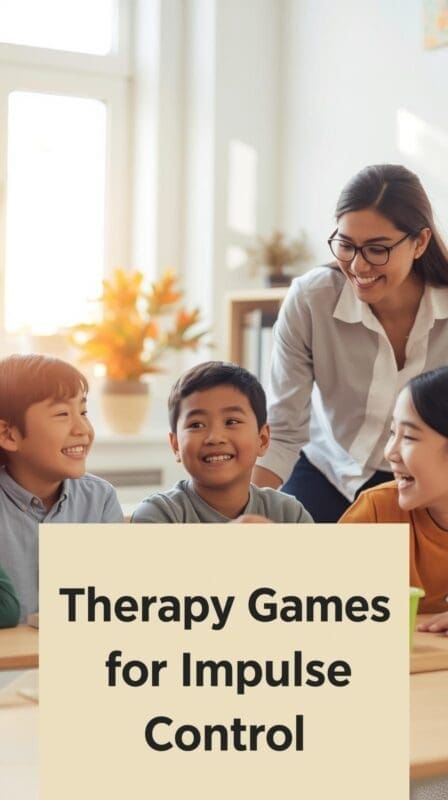Children love to move, explore, and experiment — but sometimes their energy turns into impulsivity. Instead of viewing this as a challenge, you can channel it into playful opportunities. Therapy games that teach kids to pause and think are powerful tools for developing impulse control and emotional regulation.
Whether you’re a parent, teacher, or counselor, these fun activities encourage kids to slow down, reflect, and build self-control — all while having fun.
1. Simon Says
How to Play:
- One leader gives commands like “Simon says touch your toes.”
- Kids must only follow if the phrase begins with “Simon says.”
Why It Works:
- Builds listening skills and impulse control.
- Kids learn to wait and check before acting.
Tip: Add silly seasonal actions like “Simon says jump like a pumpkin” to keep it fresh.
2. Red Light, Green Light
How to Play:
- Children line up at one end of a room or playground.
- When you say “green light,” they move; when you say “red light,” they freeze.
Why It Works:
- Strengthens self-control by practicing stopping and starting on cue.
- Kids learn to pause before rushing ahead.
Tip: Add a “yellow light” for slow-motion walking to build patience.
3. Freeze Dance
How to Play:
- Play music and let kids dance freely.
- Pause the music — kids must freeze instantly.
Why It Works:
- Improves body control and awareness.
- Teaches kids to stop and hold still on command.
Tip: Use calming background music at the end to transition into quiet focus.
4. Jenga with Reflection Questions
How to Play:
- Write simple impulse-control questions on Jenga blocks (e.g., “What should you do if someone takes your toy?”).
- As kids pull blocks, they answer the questions.
Why It Works:
- Combines play with reflection.
- Reinforces problem-solving and thinking before acting.
5. The Waiting Game
How to Play:
- Give each child a small treat or toy.
- Challenge them to wait a few minutes before using or eating it.
- Reward patience with praise or a bonus.
Why It Works:
- Strengthens delay of gratification — a cornerstone of impulse control.
- Helps kids practice waiting calmly.
6. “What Would You Do?” Scenario Game
How to Play:
- Present short stories (e.g., “Your friend has a toy you want, what do you do?”).
- Kids take turns suggesting responses.
Why It Works:
- Builds awareness of choices.
- Connects values with actions in real-life situations.
Wrapping Up
Impulse control doesn’t have to be boring or restrictive. With playful therapy games like Simon Says, Freeze Dance, and Jenga with reflection questions, kids learn how to pause, think, and act intentionally.
Over time, these fun moments build lasting skills that support school success, friendships, and emotional well-being.
For more strategies, explore my guides on Impulsivity in Children .

About the Author
Hi, I’m Eve, a former school counselor with a master’s degree in School Psychology and a passionate advocate for children and families navigating sensory challenges. As a mom of children with sensory sensitivities, I deeply understand the journey special-needs parents face, and I dedicate myself to researching and sharing practical solutions to help children thrive and feel comfortable in their bodies. My goal is also to empower counselors, therapists, and psychologists with creative strategies and supportive resources to enrich their everyday practice. When I’m not writing or exploring new therapeutic approaches, you’ll find me spending quality time with my family and continually seeking inspiration from everyday moments.



